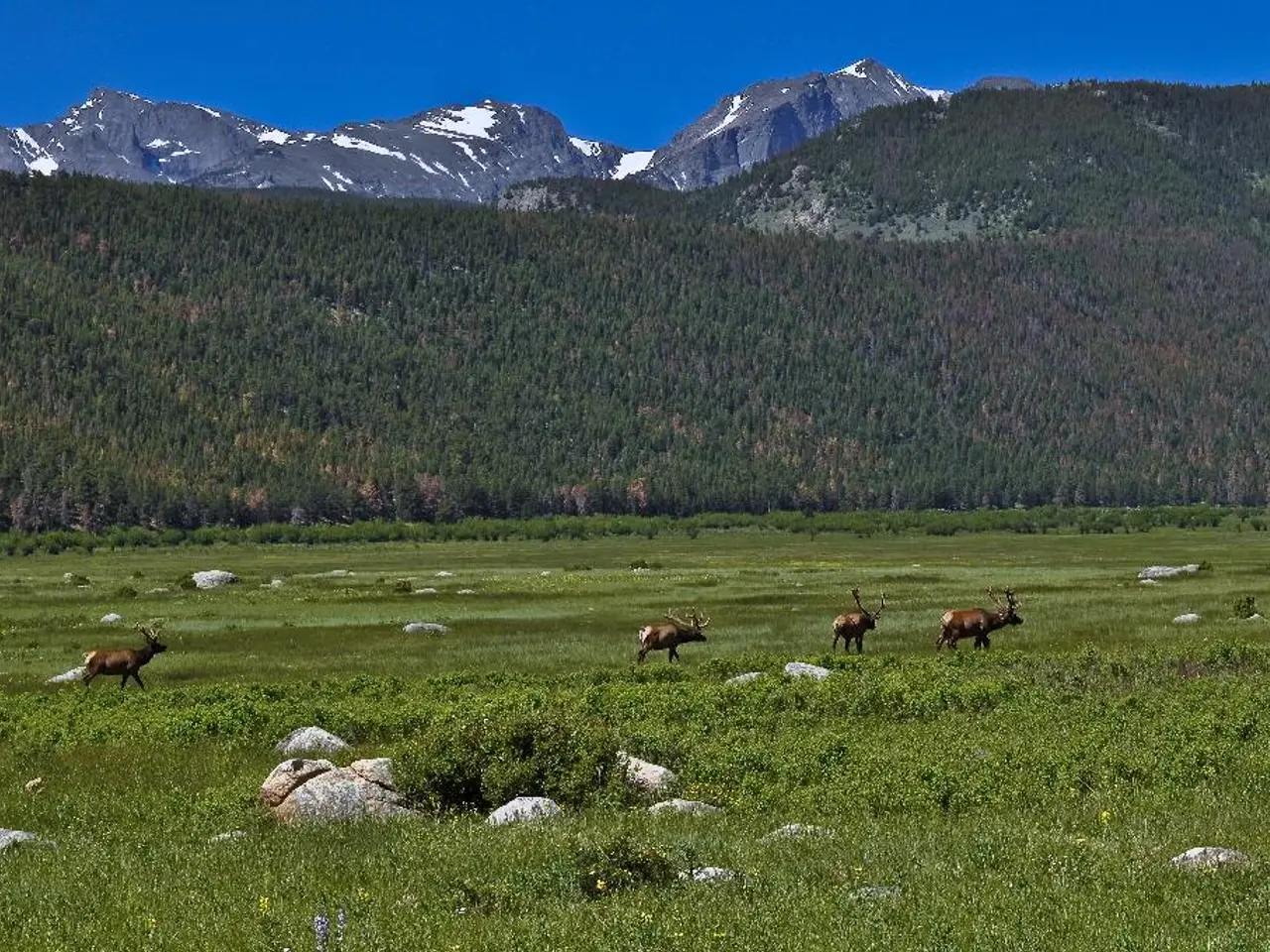Nature's mysteries unraveled by Brian Cox: Insights into cosmic phenomena
Brian Cox's New BBC Series Explores the Wonders of Nature and the Universe
British physicist Brian Cox is back with a new BBC One series titled "Forces of Nature." This ambitious project aims to delve into the fundamental physical forces shaping our world and the cosmos.
The series, which begins on July 4 with the first of four programs, takes viewers on a captivating journey through the natural world. It explores the interplay of gravity, electromagnetism, and quantum mechanics in determining the structure of everything around us, from the smallest particles to entire galaxies.
Cox, who is a Fellow of the Royal Society and a professor of public engagement at Manchester University, is known for his engaging approach to science communication. He finds the ever-present challenge of explaining everyday phenomena, such as the tides or the growth of ice crystals, the most interesting aspect of making the series.
One of the key topics in "Forces of Nature" is the connection between physics and the familiar world. The show illustrates how these forces give rise to the shapes and patterns we see in nature, such as the formation of rivers, mountains, clouds, and ecosystems. By doing so, it emphasizes the unity of physical laws across different scales.
The series is inspired by Carl Sagan's "Cosmos" and focuses on powerful standalone stories. One such story involves Nepalese villagers climbing precipitous cliffs for honey. Cox also references Plato's allegory of the cave to explain complex scientific concepts in accessible ways, revealing the beauty and order underlying the apparent chaos of nature.
"Forces of Nature" also delves into the beauty of our planet Earth. Viewers are taken on a tour of the planet, from the crystal-clear waters of Silfra, Iceland, where Cox submerges to explain why water is blue, to the remarkable festival in Spain where children build living towers, making Morris dancing look tame.
The series also pays homage to historical figures in science. Cox draws inspiration from Johannes Kepler's "On the Six-Cornered Snowflake," which speculated on the six-fold structure of snowflakes and its relationship to nature. Today, we know that the properties of water can explain the six-fold structure of snowflakes.
In addition to "Forces of Nature," Cox can also be seen in the BBC's "Collider" exhibition about the search for the Higgs particle. He has worked exclusively for BBC Two and Four before this series, but was reassured by Charlotte Moore, Controller of BBC One, that he could stick to his creative formula.
Tony Hall, Director General of the BBC, was present at the event where Cox submerged in the 4°C waters of Silfra, Iceland. Hall's new project, the "New Age of Wonder," aims to work more closely with national institutions, and "Forces of Nature" is a testament to this initiative.
In conclusion, "Forces of Nature" promises to be an engaging and enlightening series that brings complex scientific concepts to a broader audience. By combining stunning visuals, engaging narrative, and Cox's unique approach to science communication, the series is sure to captivate viewers and inspire a new generation of scientists.
- Brian Cox's exploration of fundamental physical forces in "Forces of Nature" extends beyond our world, reaching as far as galaxies.
- The first episode of "Forces of Nature" on BBC One highlights the role of Gravity, Electromagnetism, and Quantum Mechanics in shaping our world and cosmos.
- Cox's creative approach to science communication in "Forces of Nature" includes explaining everyday phenomena, such as the tides, in simple terms.
- "Forces of Nature" connects physics with the familiar world, revealing how physical forces shape natural structures like rivers, mountains, clouds, and ecosystems.
- Nepalese villagers climbing precarious cliffs for honey is one of the compelling stories in "Forces of Nature," demonstrating the series' focus on powerful standalone narratives.
- Plato's allegory of the cave is employed in "Forces of Nature" to explain complex scientific concepts in ways that are relatable and visually appealing.
- The show takes viewers on a tour of the Earth's wonders, showcasing the crystal-clear waters of Silfra, Iceland, and the remarkable living towers built by children in Spain.
- "Forces of Nature" draws inspiration from historical figures in science, such as Johannes Kepler, whose work on snowflake structures has been further validated by modern discoveries.
- Cox is not only involved in "Forces of Nature" but also features in the BBC's "Collider" exhibition about the search for the Higgs particle.
- Charlotte Moore, Controller of BBC One, reassured Cox that he could maintain his unique creative formula in "Forces of Nature," even though he has previously worked mainly on BBC Two and Four.
- Tony Hall, Director General of the BBC, supports national institutions' collaboration in a new project called "New Age of Wonder," as demonstrated by the production of "Forces of Nature."




